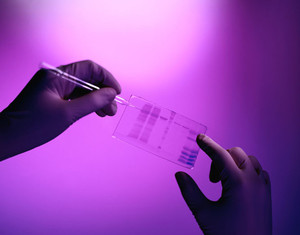There are many physicians and patients who have concerns that the bioequivalent generics may not have an equivalent nature in terms of their clinical effect and benefit. In the realm of cardiovascular disease, this can include such parameters as heart rate, blood pressure and laboratory measurements.
The most worrisome class of drugs are those with a Narrow Therapeutic Index (NTI), where the effective dose and toxic dose is separated by only a small difference in plasma concentration. This article summarises the empirical research into the clinical equivalency of cardiovascular NTI drugs.
Research
Two studies have been performed with anti-arrhythmic drugs; one small bioequivalence study with ten subjects investigated pronestyl versus procainamide and one large retrospective cohort study investigated rythmex versus propafenone [1, 2]. The bioequivalence study found no significant differences between the two groups when comparing the type or frequency of ventricular premature beats on telemetry. The larger study found no significant differences in clinic visits, admissions, cardioversions or the use of other cardiovascular medications, but did find that generic use led to a slight reduction in total emergency department discharges and visits for chest pain.
More research into the clinical equivalence of anticoagulants has been performed. Kesselheim et al. identified ten studies that directly compared coumadin with warfarin and one study that investigated coumadin with two versions of warfarin [3]. In six of these randomised controlled trials or prospective studies, generic and brand-name warfarin were found to perform similarly in all clinical endpoints such as international normalised ratio, frequency of adverse event, and required dose adjustments. Five retrospective, observational trials reported similar results and no significant difference was seen in clinical outcome, including haemorrhagic adverse events or thromboembolic disease.
Conclusion
Research, to date, has generally confirmed the assumption that bioequivalent generics are also equivalent in their clinical efficacy; this is also the case for NTI drugs. However, care should be taken when hypothesising upon the results of small studies, which are insufficiently powered to determine whether statistical non-significance between the effects of two groups’ drugs actually equals a similarity in action or equivalency between the two groups under study or simply that there is insufficient data to determine that they are different.
Related articles
The therapeutic equivalence of antiplatelet agents, ACE-inhibitors, statins and alpha-blockers
The clinical equivalence of generic and brand-name calcium channel blockers
Are generic diuretics clinically equivalent to their brand-name counterparts for the management of cardiovascular disease?
The clinical equivalence of brand-name beta-blockers and their generic counterparts
Generic or brand-name drugs for cardiovascular disease? Does the evidence match current opinion?
The rise in power of generic drugs
References
1. Kasmer RJ, Nara AR, Green JA, Chawla AK, Fleming GM. Comparable steady-state bioavailability between two preparations of conventional-release procainamide hydrochloride. Drug Intell Clin Pharm. 1987;21(2):183-6.
2. Amit G, Rosen A, Wagshal AB, Bonneh DY, Liss T, Grosbard A, et al. Efficacy of substituting innovator propafenone for its generic formulation in patients with atrial fibrillation. Am J Cardiol. 2004;93(12):1558-60.
3. Kesselheim AS, Misono AS, Lee JL, Stedman MR, Brookhart MA, Choudry NK, et al. Clinical equivalence of generic and brand-name drugs used in cardiovascular disease: a systematic review and meta-analysis. JAMA. 2008;300(21):2514-26.








 0
0











Post your comment